Red currant: care and growing rules
Red currant is one of the favorite fruit plants of gardeners. Its berries are not only tasty, but also very useful, they contain a huge amount of vitamins and biologically active substances. The fruits are actively used in canning; jelly, marmalade, compotes, etc. are prepared from them.
Caring for red currants is easier than caring for black currants, and this is an additional reason for its popularity. Breeding work has been going on for many decades, and today gardeners can choose a wide variety of varieties that are resistant to adverse factors.
Content:
- General description of red currant
- Growing conditions for red currants
- Planting red currants
- Seasonal shrub care
General description of red currant
Red currant is a widespread shrub with a height of 1.2 to 2 m. Shrub includes several well-developed branches, leaves grow along their entire length. At the base, you can see young basal shoots with small leaves. The leaf blade has a characteristic shape with a serrated edge; outwardly, it differs little from a black currant leaf.
This plant is one of the long-lived: with the right fertilization, red currants can bear fruit for more than 20-25 years.
At the same time, like other berry crops, currants very quickly take nutrients from the soil. If you do not take care of the timely application of fertilizers, the berries will be small and the harvest will not be plentiful.
The bushes are winter hardy, they are able to withstand even severe frosts. Moreover, they are resistant to various pests.
Features of currants:
- Red currants begin to bloom around mid-May, small buds have yellowish or reddish petals.
- Flowering lasts two weeks, ripening of berries begins in mid-June.
- The berries are arranged in clusters on light green stalks, their diameter can be from 8 to 12 mm, depending on the variety.
In Russia now more than 10 varieties are grown, which differ not only in the size of the berries, but also in the ripening time and taste of the fruit. To achieve a good harvest, it is recommended to grow several bushes of different varieties on the same plot, which allows you to use cross-pollination and get the best quality fruits.
Growing conditions for red currants
Red currant belongs to light-loving plants, therefore open, well-lit places are preferable for it. With a lack of light, the berries ripen much slower and they will not be as sweet.
These are compact enough plants, so they can be planted along a wall or fence, and each bush does not require too much space.
Previously, they were grown not as fruit, but as ornamental plants because of the pleasant, beautiful foliage. A hedge of currant bushes will be an excellent decoration for the garden, which will bring tasty and healthy fruits.
Other important conditions for a good harvest:
- Red currant prefers well aerated soils, it is advisable to place it on loose sandy loam or loamy soil. If the soil is waterlogged, the shrub is planted in a raised bed, this avoids root decay.In addition, chips or small twigs can be placed on the bottom of the pit to create a drainage layer.
- Slightly acidic soils are more suitable for good fruiting, the optimal level of acidity is 6.0-6.5.
- You must follow the schedule fertilization: in the fall, half a bucket of compost is introduced into the soil per square meter, with which 20 grams of superphosphate is mixed. In addition, fertilizers include potassium sulfate - 25 g per sq. m. In the spring, ammonium nitrate is added to the soil in an amount of 25 g per sq. m. meter. After flowering, organic fertilizers are additionally applied: this is a diluted mullein (1:10) or bird droppings in a proportion (1:25).
When planting, you need to make sure that there is a distance of at least 1-1.5 m between the seedlings.
Otherwise, the bushes will grow too often and they will suffer from a lack of light. This leads to a decrease in yields, so you will have to thin out the plantings, removing unnecessary branches... The distance to the trees should be at least 3 meters, otherwise the bush will constantly cover the shadow from the crown.
Planting red currants
For propagation of currants, cuttings and layering are used, the method of dividing the bush is also often used, in which the rhizome is cut into several parts with a shovel.
It is not difficult to acquire red currant seedlings because of the widespread prevalence of this plant; it is important to pay attention to their quality and variety.
Seedlings are transplanted into the ground in early autumn, and you can't be late: the plants should have enough time to prepare for the winter season. Even an inexperienced gardener can handle planting, it is carried out as follows:
Preparation before landing:
- It is necessary to prepare pits in advance, the depth of which is 40 cm, and the width is up to 60 cm. This is necessary so that the soil has time to settle.
- Organic fertilizers need to be applied to the ground: this is 8-10 kg of humus with peat, to which you can add superphosphate wood ash.
- If the soil is too dense, thin it with sand.
- The seedling can be planted directly in the hole, but more often it is placed obliquely: this contributes to the faster formation of lateral roots.
After planting, you need to water the seedling well: the water consumption is about 5 liters per 1 bush. At the same time, the ground around it is not trampled down, it must remain sufficiently loose. The roots are mulched with peat, you can also use humus.
The branches are cut: the height of the aboveground part should be 10-15 cm, at least 3-4 buds should remain on the branches.
When choosing a seedling, you need to pay attention to its roots... They must be lignified and durable, the total length is at least 20 cm. Before planting, the seedlings are advised to be placed in a container of water for several hours, into which clay is added so that the roots are well saturated with moisture. This will accelerate the survival rate of the bush and allow new roots to grow faster. When choosing a top dressing, it is important to take into account that red currants do not like chlorine, and it should not be in the composition of fertilizers.
Seasonal shrub care
Although caring for red currants can hardly be called too laborious, it will take an effort to get the maximum result. In the spring, it is necessary to loosen the soil near the bush, debris and fallen leaves are removed from under it.
In addition, it is necessary to prune: old dried branches are removed, and the bush must be pruned before new buds appear on it. You can prepare props for the largest branches: this let the bush grow straight, which will ensure the sun's rays hit the berries. In addition, it will allow you to harvest much faster.
Watering conditions:
- Watering the bushes is optional, the only exception is very dry weather. if during June there was no rain for a long time, it is necessary to water the bushes in the evening: at least 3-5 buckets of water are needed for each plant.
- You can also additionally spray the leaves with water, this can be done in the evening.
In the summer, you need to constantly remove weeds, as they take nutrients from the soil and prevent the growth of shrubs.
In the fall, after harvesting, the bushes are fertilized, in addition, at the beginning of the dormant period, re-pruning is carried out. It is necessary to remove the side branches that have grown far from the main bush. At the same time, you cannot damage the young shoots at the base of the bush: it is on them that flower brushes and fruits will appear in the spring.
At the very end of autumn, you need to cover the root system of plants with snow in order to protect it from freezing. Although the currant belongs to winter-hardy plants, you need to take care of its protection from severe cold weather and especially dangerous spring frosts for it.
Harvesting - the most pleasant time for a gardener:
- Due to their rich taste, bright red berries are eaten fresh, in addition, they are actively used in cooking and winemaking.
- This is a real natural storehouse of vitamins, berries have medicinal properties.
- They help to strengthen the immune system, protect against colds and vitamin deficiencies.
- Red currant compotes are rich in antioxidants and other beneficial substances.
More information can be found in the video.



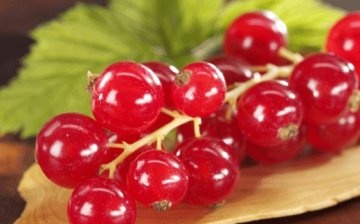
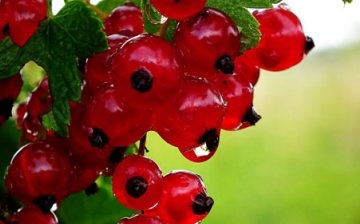
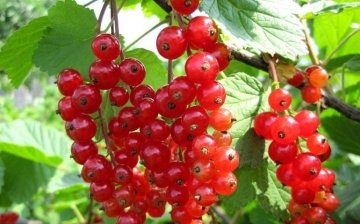
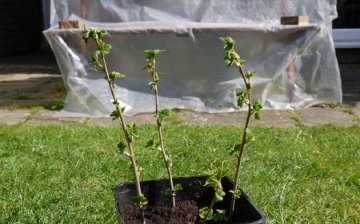
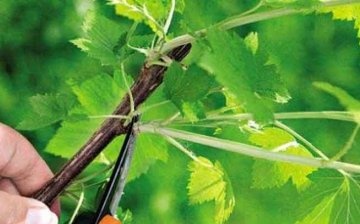





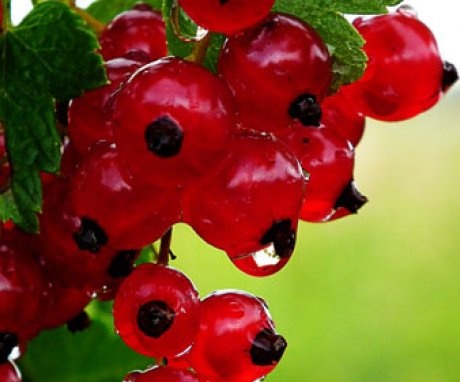
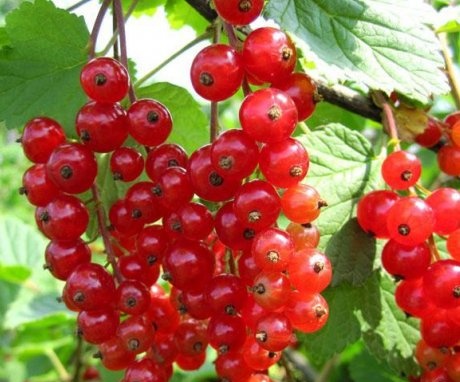
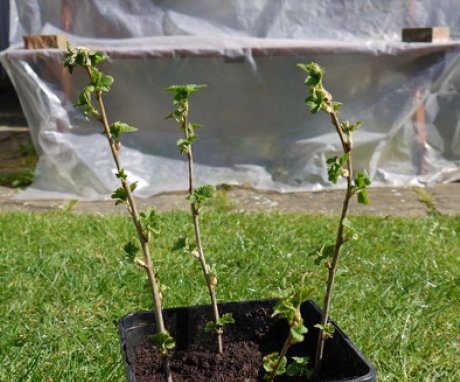

We have a dozen bushes in our garden. Currants are really unpretentious. But then I read that she loves the sun, and here it grows in a loose shade ... Perhaps that is why there is a slight sourness, although this does not affect the yield at all.
We have a lot of red bushes, although we like black currants more. But there is also white, but we hardly eat it. Care is simple, the main thing is to put and cut old branches on the trellis in a circle. Don't dig in! The roots are almost on the surface, after all.